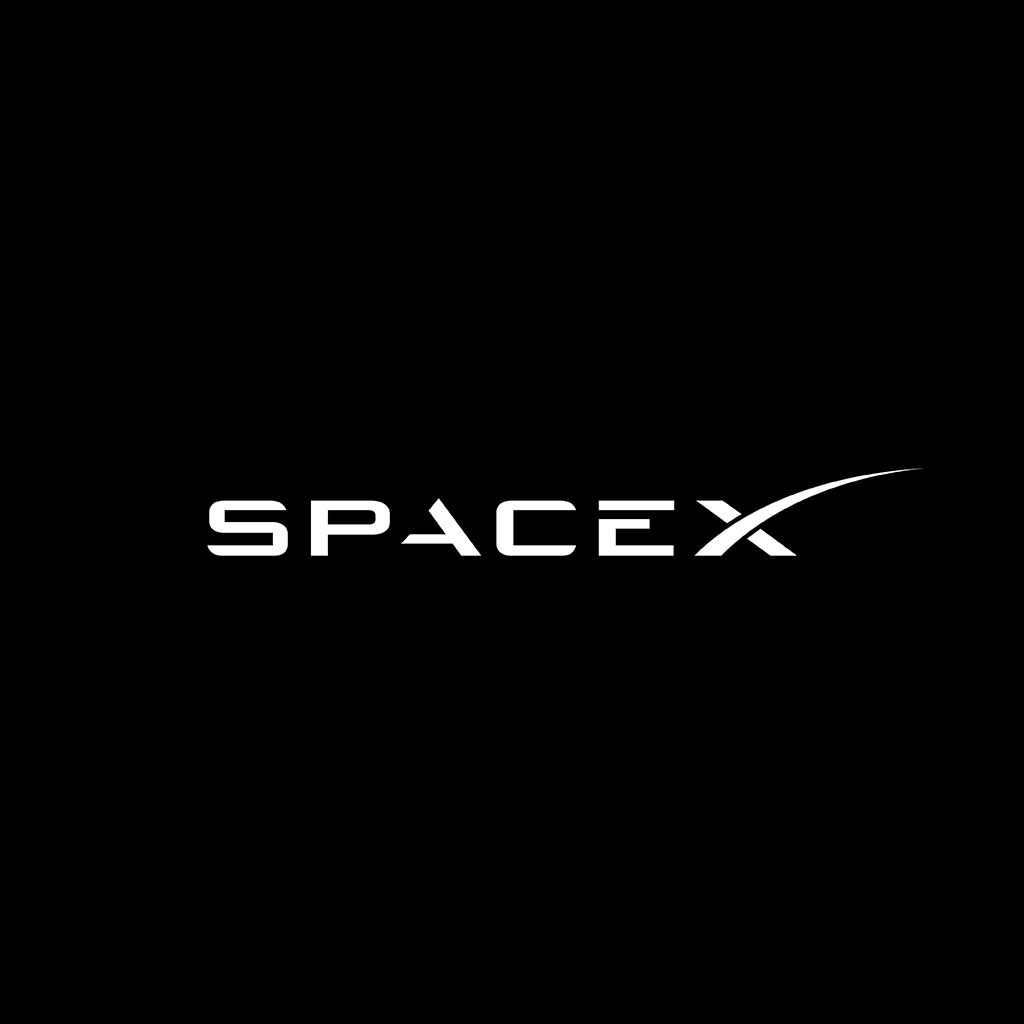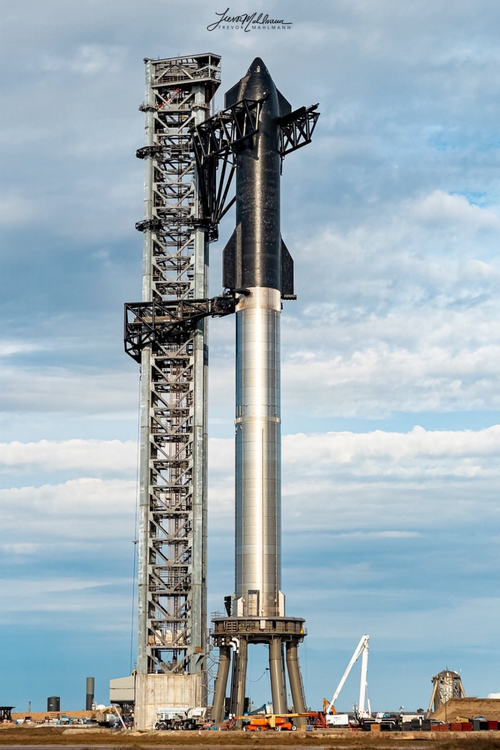You are using an out of date browser. It may not display this or other websites correctly.
You should upgrade or use an alternative browser.
You should upgrade or use an alternative browser.
SpaceX (general discussion)
- Thread starter FutureSpaceTourist
- Start date
- Joined
- 13 August 2007
- Messages
- 8,451
- Reaction score
- 11,019
I wonder if SpaceX increased there use of LZ-1&2 in 2022 ?So Musk can't help annoying Bezos at every level ? LMAO
because Falcon Heavy will fly again in 2022 !
Current state Blue Origin vs SpaceX
19 Suborbital Flight with New Shepard
4 manned flights Suborbital with total 14 persons
Zero flight New Glenn (and zero flight Vulcan rocket do lack of BE-4 engines)
106 Suborbital Landing with Falcon 9
140 flights Falcon 9 and Heavy
5 manned flights to space with total 18 persons
9 Suborbital Test of Starship
zero flight Starship/Superheavy (could happen in march 2022)
Last edited:
- Joined
- 21 January 2015
- Messages
- 12,156
- Reaction score
- 16,371
- Joined
- 21 January 2015
- Messages
- 12,156
- Reaction score
- 16,371
Full Stack of 4/20 for Starship Presentation next Thursday (10th) at 8pm CST.
View: https://twitter.com/elonmusk/status/1489370360864780291?s=20&t=aE8v9hhAmkN5CMrou613Lw
View: https://twitter.com/elonmusk/status/1489370360864780291?s=20&t=aE8v9hhAmkN5CMrou613Lw
- Joined
- 13 June 2007
- Messages
- 2,173
- Reaction score
- 3,093
Looks like my son and I will be at Boca Chica on the afternoon of March 17th and morning of March 18th as part of our traditional Spring Break Road Trip. We have been taking these trips since he was 8 and now he'll be 18 end of March and off to college this summer - going to make the most of the last one! Anyone been down there and any hints/tips on seeing the SpaceX sites and taking photos? Wonder too if there is someone to hire for overflights. Figured if we go that far, (live in St. Louis, MO) might as well do it up right.
Enjoy the Day! Mark
Enjoy the Day! Mark
aonestudio
I really should change my personal text
- Joined
- 11 March 2018
- Messages
- 2,964
- Reaction score
- 7,493
- Joined
- 21 January 2015
- Messages
- 12,156
- Reaction score
- 16,371
A closer looks at Falcon 9 leg actuation before touching down at Vandenberg SFB following the NROL-87 mission. My remote camera was framed to capture a few frames of the process.
View: https://twitter.com/w00ki33/status/1490174780229636105
aonestudio
I really should change my personal text
- Joined
- 11 March 2018
- Messages
- 2,964
- Reaction score
- 7,493
FEBRUARY 8, 2022
GEOMAGNETIC STORM AND RECENTLY DEPLOYED STARLINK SATELLITES
On Thursday, February 3 at 1:13 p.m. EST, Falcon 9 launched 49 Starlink satellites to low Earth orbit from Launch Complex 39A (LC-39A) at Kennedy Space Center in Florida. Falcon 9’s second stage deployed the satellites into their intended orbit, with a perigee of approximately 210 kilometers above Earth, and each satellite achieved controlled flight.
SpaceX deploys its satellites into these lower orbits so that in the very rare case any satellite does not pass initial system checkouts it will quickly be deorbited by atmospheric drag. While the low deployment altitude requires more capable satellites at a considerable cost to us, it’s the right thing to do to maintain a sustainable space environment.
Unfortunately, the satellites deployed on Thursday were significantly impacted by a geomagnetic storm on Friday. These storms cause the atmosphere to warm and atmospheric density at our low deployment altitudes to increase. In fact, onboard GPS suggests the escalation speed and severity of the storm caused atmospheric drag to increase up to 50 percent higher than during previous launches. The Starlink team commanded the satellites into a safe-mode where they would fly edge-on (like a sheet of paper) to minimize drag—to effectively “take cover from the storm”—and continued to work closely with the Space Force’s 18th Space Control Squadron and LeoLabs to provide updates on the satellites based on ground radars.
Preliminary analysis show the increased drag at the low altitudes prevented the satellites from leaving safe-mode to begin orbit raising maneuvers, and up to 40 of the satellites will reenter or already have reentered the Earth’s atmosphere. The deorbiting satellites pose zero collision risk with other satellites and by design demise upon atmospheric reentry—meaning no orbital debris is created and no satellite parts hit the ground. This unique situation demonstrates the great lengths the Starlink team has gone to ensure the system is on the leading edge of on-orbit debris mitigation.


 www.space.com
www.space.com
GEOMAGNETIC STORM AND RECENTLY DEPLOYED STARLINK SATELLITES
On Thursday, February 3 at 1:13 p.m. EST, Falcon 9 launched 49 Starlink satellites to low Earth orbit from Launch Complex 39A (LC-39A) at Kennedy Space Center in Florida. Falcon 9’s second stage deployed the satellites into their intended orbit, with a perigee of approximately 210 kilometers above Earth, and each satellite achieved controlled flight.
SpaceX deploys its satellites into these lower orbits so that in the very rare case any satellite does not pass initial system checkouts it will quickly be deorbited by atmospheric drag. While the low deployment altitude requires more capable satellites at a considerable cost to us, it’s the right thing to do to maintain a sustainable space environment.
Unfortunately, the satellites deployed on Thursday were significantly impacted by a geomagnetic storm on Friday. These storms cause the atmosphere to warm and atmospheric density at our low deployment altitudes to increase. In fact, onboard GPS suggests the escalation speed and severity of the storm caused atmospheric drag to increase up to 50 percent higher than during previous launches. The Starlink team commanded the satellites into a safe-mode where they would fly edge-on (like a sheet of paper) to minimize drag—to effectively “take cover from the storm”—and continued to work closely with the Space Force’s 18th Space Control Squadron and LeoLabs to provide updates on the satellites based on ground radars.
Preliminary analysis show the increased drag at the low altitudes prevented the satellites from leaving safe-mode to begin orbit raising maneuvers, and up to 40 of the satellites will reenter or already have reentered the Earth’s atmosphere. The deorbiting satellites pose zero collision risk with other satellites and by design demise upon atmospheric reentry—meaning no orbital debris is created and no satellite parts hit the ground. This unique situation demonstrates the great lengths the Starlink team has gone to ensure the system is on the leading edge of on-orbit debris mitigation.


SpaceX says a geomagnetic storm just doomed 40 Starlink internet satellites
The satellites launched on Feb. 3, only to be hit by the storm a day later.
- Joined
- 13 August 2007
- Messages
- 8,451
- Reaction score
- 11,019
something going on in Starbase
S20 is under grip

S20 is under grip

- Joined
- 2 January 2006
- Messages
- 3,828
- Reaction score
- 5,132
something going on in Starbase
S20 is under grip

Indeed ...
View: https://twitter.com/NicAnsuini/status/1491238625283125255
View: https://twitter.com/thejackbeyer/status/1491468026323087368

SpaceX satellites falling out of orbit after solar storm
SpaceX's newest fleet of satellites is tumbling out of orbit after being struck by a solar storm
- Joined
- 9 October 2009
- Messages
- 21,976
- Reaction score
- 13,638
Ouch, and double ouch.
Roland Emmerich starts taking notes for his next disaster (and disastrous) movie. Where 120 000 satellites start randomly falling from the sky and spread havoc across the world.
Emmerich's Moonfall is here. Mediocre idea...
Last edited by a moderator:
aonestudio
I really should change my personal text
- Joined
- 11 March 2018
- Messages
- 2,964
- Reaction score
- 7,493
- Joined
- 13 August 2007
- Messages
- 8,451
- Reaction score
- 11,019
- Joined
- 2 January 2006
- Messages
- 3,828
- Reaction score
- 5,132
- Joined
- 2 January 2006
- Messages
- 3,828
- Reaction score
- 5,132
- Joined
- 21 January 2015
- Messages
- 12,156
- Reaction score
- 16,371
- Joined
- 9 October 2009
- Messages
- 21,976
- Reaction score
- 13,638

Spectacular Video Shows Starlink Satellite Disintegrating Over Puerto Rico After Geomagnetic Storm
SpaceX lost 40 satellites after a geomagnetic storm prevented them from rising to their operational orbits.
- Joined
- 13 August 2007
- Messages
- 8,451
- Reaction score
- 11,019

By the way, Raptor 2 arrived at Starbase

aonestudio
I really should change my personal text
- Joined
- 11 March 2018
- Messages
- 2,964
- Reaction score
- 7,493
martinbayer
ACCESS: Top Secret
- Joined
- 6 January 2009
- Messages
- 3,397
- Reaction score
- 3,906
I am truly awestruck at what Musk has accomplished already so far.
- Joined
- 13 August 2007
- Messages
- 8,451
- Reaction score
- 11,019
I am truly awestruck at what Musk has accomplished already so far.
2019 that was a field at Texas Coast
2022 A Production and launch Site, while in KSC a second production and Launch site is build
Musk mention 6 months until Pad 39A terminal is ready, i believe that in august first Starship/Super mockups will tested there.
but what really impress me is this
That's are $50 billion in today value so,Starship/superheavy R&D cost are on 2% to 5% of Saturn V cost so Musk
SpaceX spend 1 to 2.5 Billion Dollar on Starship/Superheavy program.
- Joined
- 3 June 2011
- Messages
- 18,338
- Reaction score
- 12,240
What heating? I didn't see most of the presentation. Did he say Raptor 2 is over heating?I'd call the combo "Slim/Jim." Hope Raptor 2 can beat the heating.
Dragon029
ACCESS: Top Secret
- Joined
- 17 March 2009
- Messages
- 881
- Reaction score
- 440
[Edit: I missed a part later in the presentation - starting around 1:11:00]What heating? I didn't see most of the presentation. Did he say Raptor 2 is over heating?I'd call the combo "Slim/Jim." Hope Raptor 2 can beat the heating.
They are somewhat combating Raptor 2 melting it's 'chamber' [presumably main combustion chamber]. They're using cryo fuel channel cooling, head-end film cooling, throat film cooling, and they're just trying to get the balance on the latter two to avoid melting the chamber. He thinks they're pretty close and they have a couple of engines on test stands that have ~700 or 800 seconds of operation and several start cycles so "it's looking positive".
Keep in mind too that with Raptor v2 they're still pushing for higher and higher chamber pressures (which in-turn means additional combustion and heat), so it sounds like if they wanted to they could run the engines closer to Raptor v1 pressures and have it survive numerous launches.
[Original comment below]
Fortunately not, rather what he said is they're getting close to the point where Raptor won't need shrouds / shields to protect against re-entry heating (at least on Super Heavy; Starship will almost certainly still need it's 'skirt' / engine bay with heatshield tiles); that'll save a bunch of mass on Super Heavy and reduce vehicle assembly complexity.
He specifically calls out how the gimballing engines are a pain because they have to have something like an "eyeball seal" where you have a spherical cap attached to the engine, rotating against a static circular hot gas seal.
One example of this "deletion and integration" process that happened from Raptor v1 to v2 was that the "preburner controllers" were consolidated into a single box rather than all over the engine (and therefore requiring cabling or pneumatic tubes everywhere). With a bit more deletion and integration he hopes to make Raptor "flame-proof, more or less".
He talks about this stuff from about the 1:00:40 mark onwards (mainly during 1:02:00-1:03:00):
Last edited:
aonestudio
I really should change my personal text
- Joined
- 11 March 2018
- Messages
- 2,964
- Reaction score
- 7,493
- Joined
- 21 January 2015
- Messages
- 12,156
- Reaction score
- 16,371
The Polaris private space program headed by Jared Isaacman. First flight this year called Polaris Dawn will be the furtherest humans have gone from the Earth since the moon flights and will feature the first private spacewalk. The first two flights in the program will be on the Crew Dragon, the third will be on Starship. Polaris Dawn will fly through portions of the Van Allen belt and require Space X to develop their own EVA suit. They will also use Starlink communication system in space for the first time. You’ll recognise the crew members of Polaris Dawn from the Inspiration4 Netflix documentary and this will be Isaacman’s second space flight.
Last edited:
- Joined
- 21 January 2015
- Messages
- 12,156
- Reaction score
- 16,371
The Polaris website:

 polarisprogram.com
polarisprogram.com

Polaris Dawn
As soon as the fourth quarter of 2022, SpaceX’s Falcon 9 rocket will launch the Polaris Dawn mission from historic Launch Complex 39A at the Kennedy Space Center in Florida.
- Joined
- 21 January 2015
- Messages
- 12,156
- Reaction score
- 16,371
- Joined
- 13 August 2007
- Messages
- 8,451
- Reaction score
- 11,019


Last edited by a moderator:
Checked Jared life. https://en.wikipedia.org/wiki/Jared_Isaacman
My mind is blown. That sucker is younger (by a few months) than me and... well hell of a fucking life, he already has.
No real jealously: kudos to him.
A fleet of combat jets (Draken International ! That was HIM ??!!!) and a flight into space: now that's what I call, childhood dreams turned reality.
No surprise he goes along Elon Musk like toothpaste on the brush. Elon once rode a L-39 jet and did all kind of stupid things with it.
... and yes, the FAA is fast becoming a major pain in the rear end.
My mind is blown. That sucker is younger (by a few months) than me and... well hell of a fucking life, he already has.
No real jealously: kudos to him.
A fleet of combat jets (Draken International ! That was HIM ??!!!) and a flight into space: now that's what I call, childhood dreams turned reality.
No surprise he goes along Elon Musk like toothpaste on the brush. Elon once rode a L-39 jet and did all kind of stupid things with it.
... and yes, the FAA is fast becoming a major pain in the rear end.
Similar threads
-
-
-
-
McDonnell Douglas X-33 SSTO Reusable Launch Vehicle
- Started by athpilot
- Replies: 0
-
Breitbart, other conservative outlets escalate anti-SpaceX campaign
- Started by Flyaway
- Replies: 5




